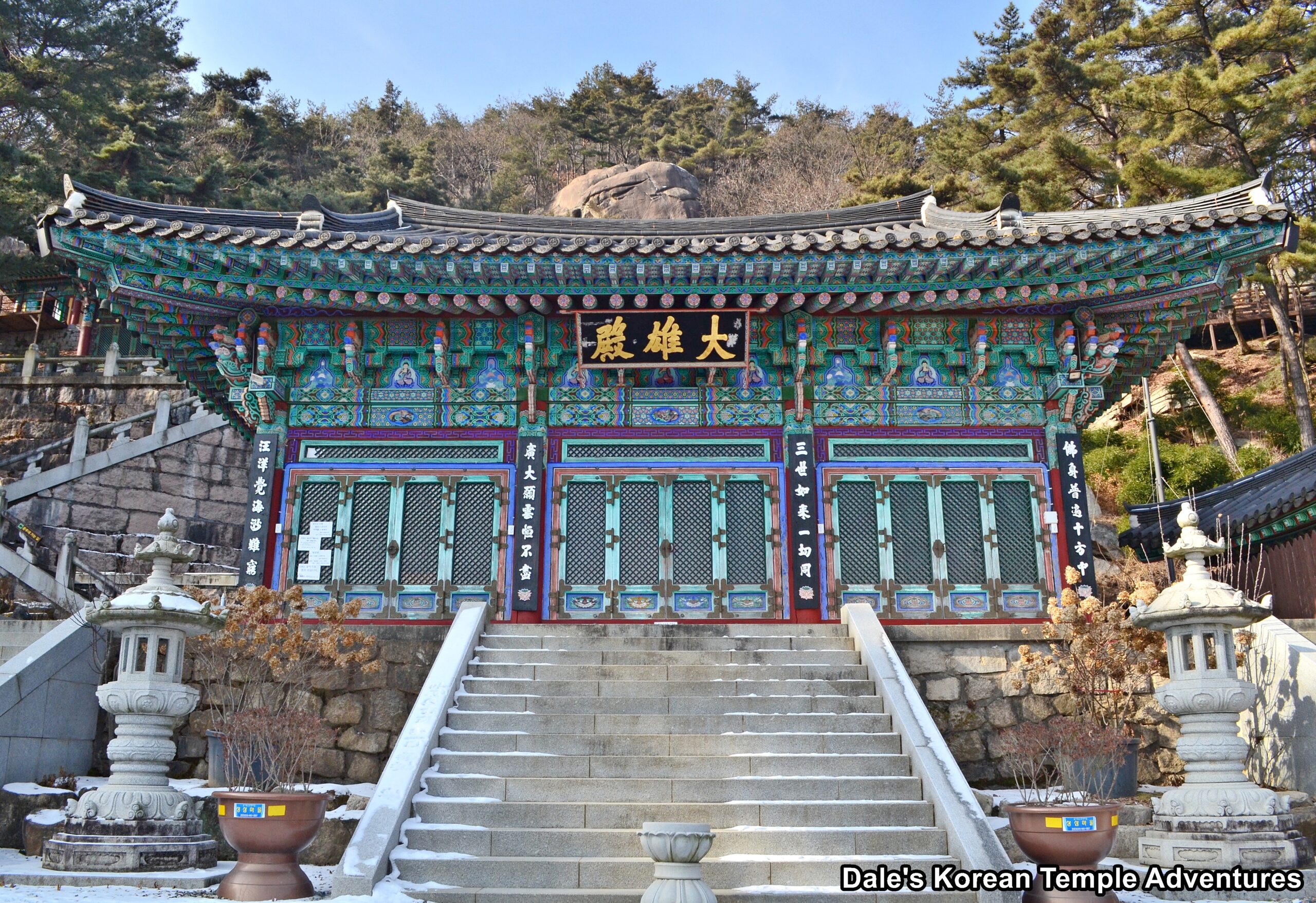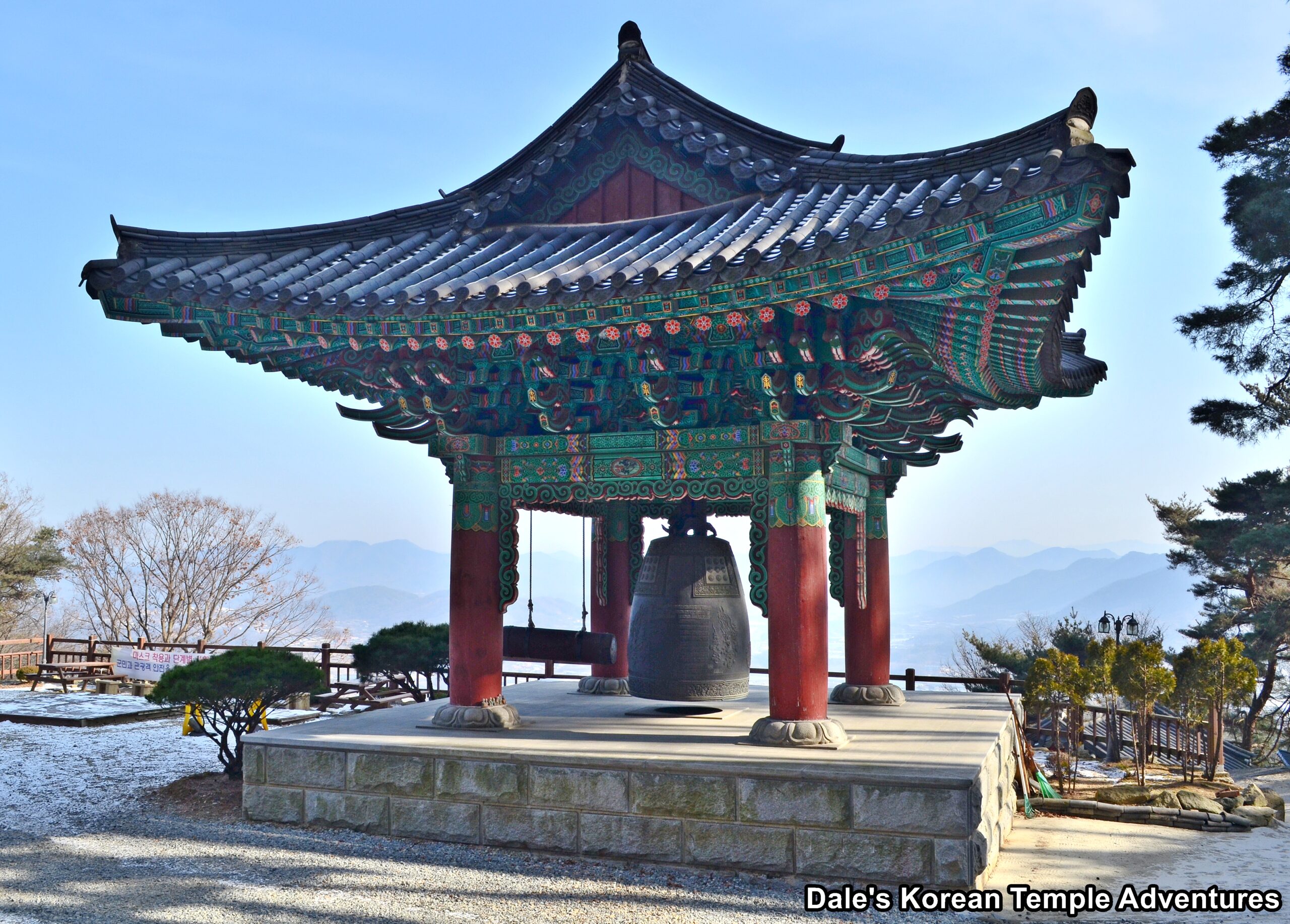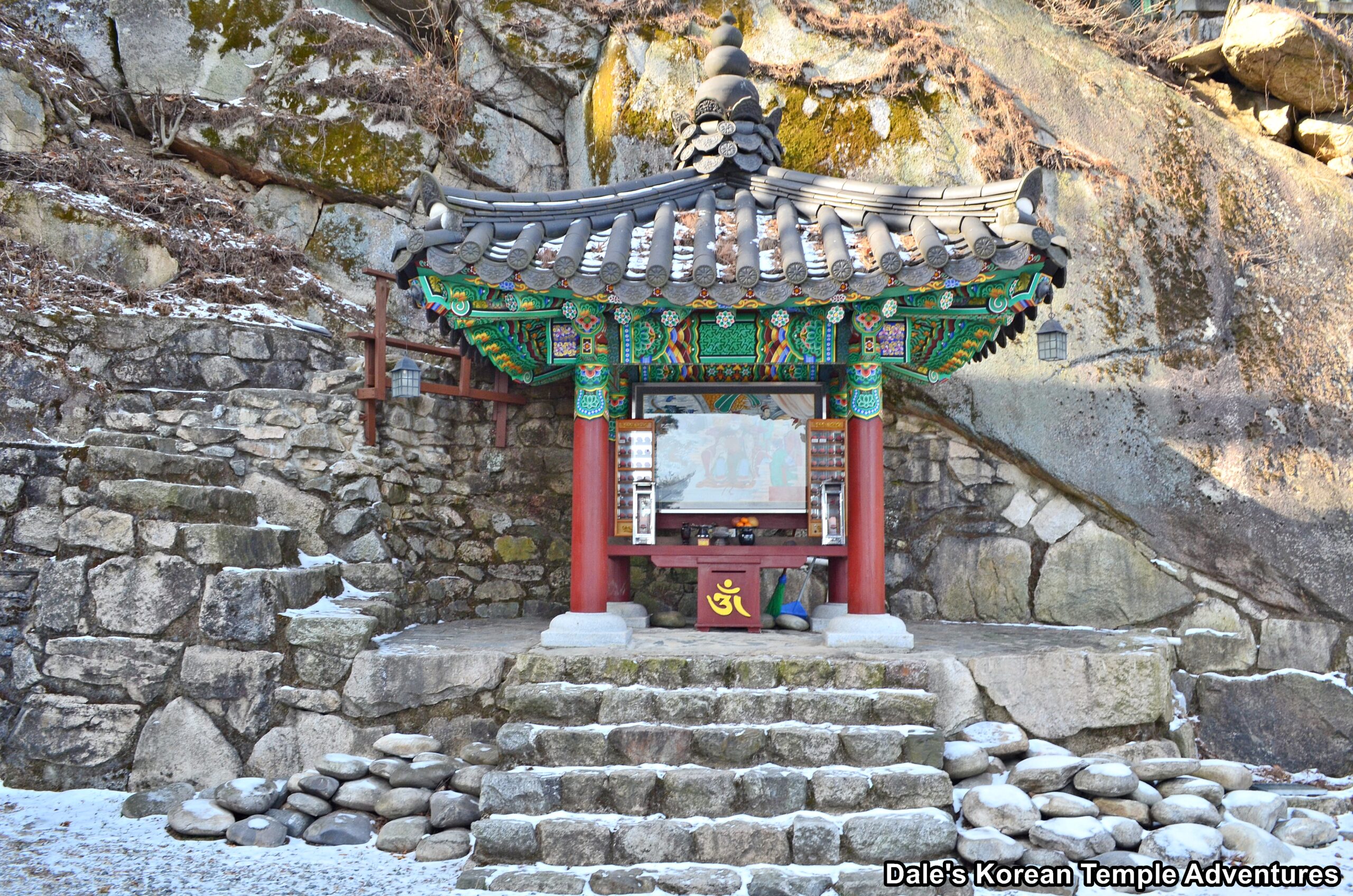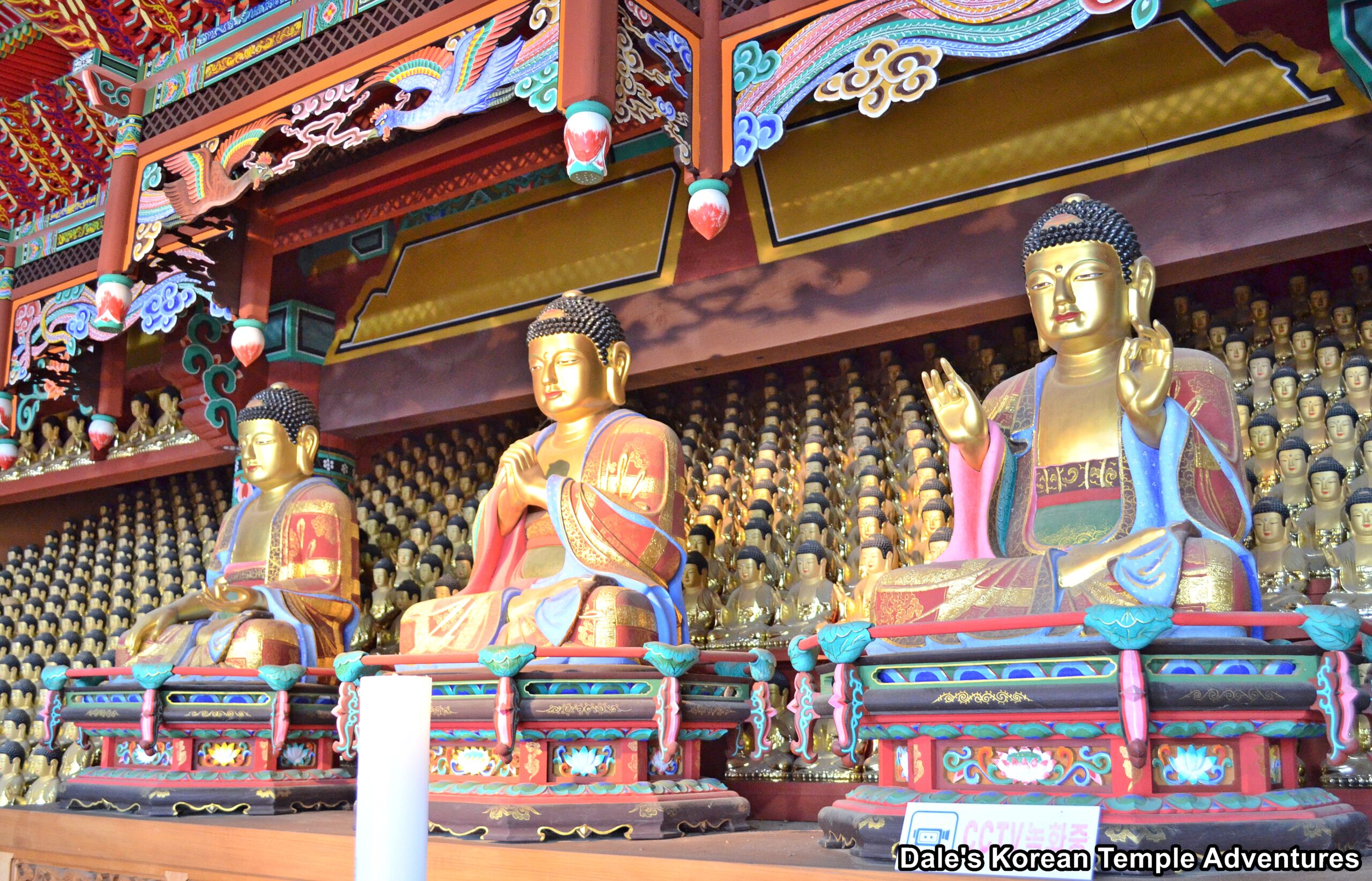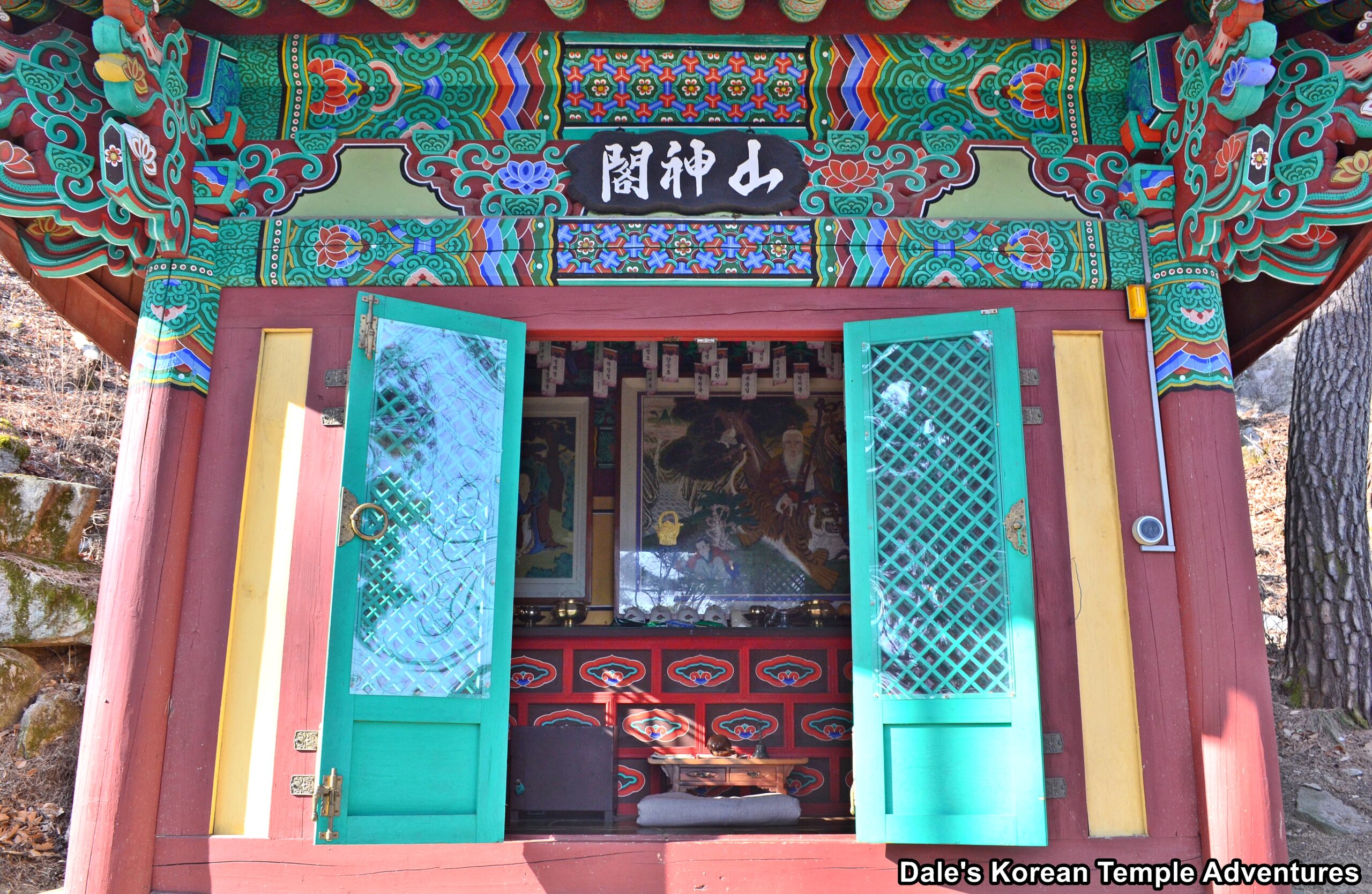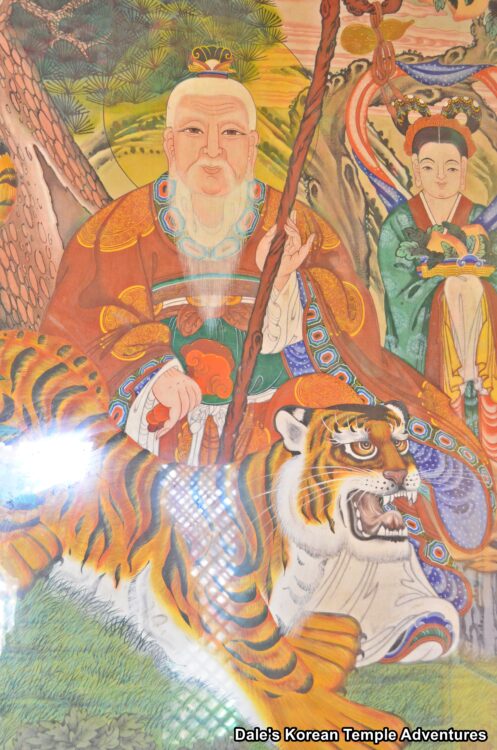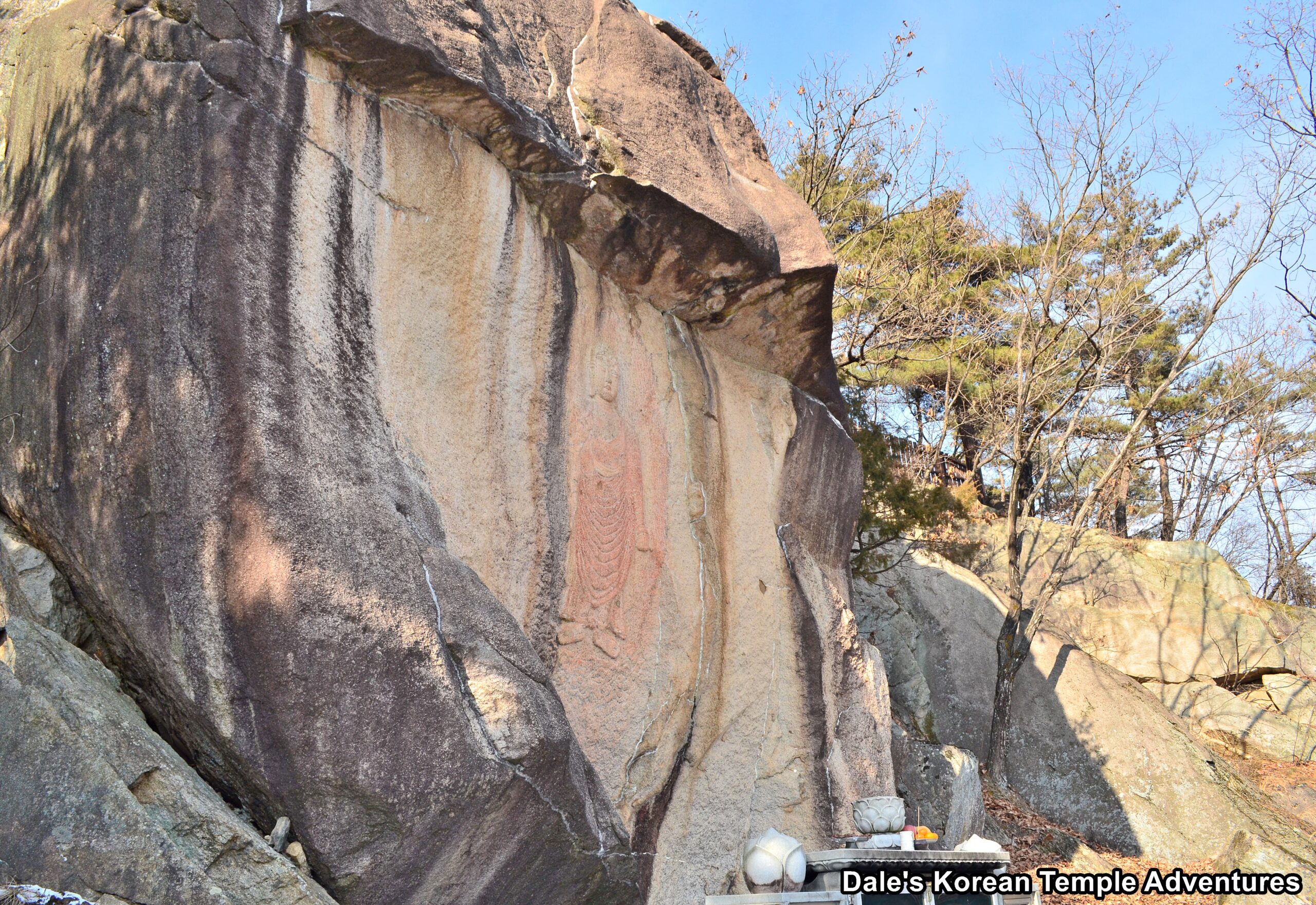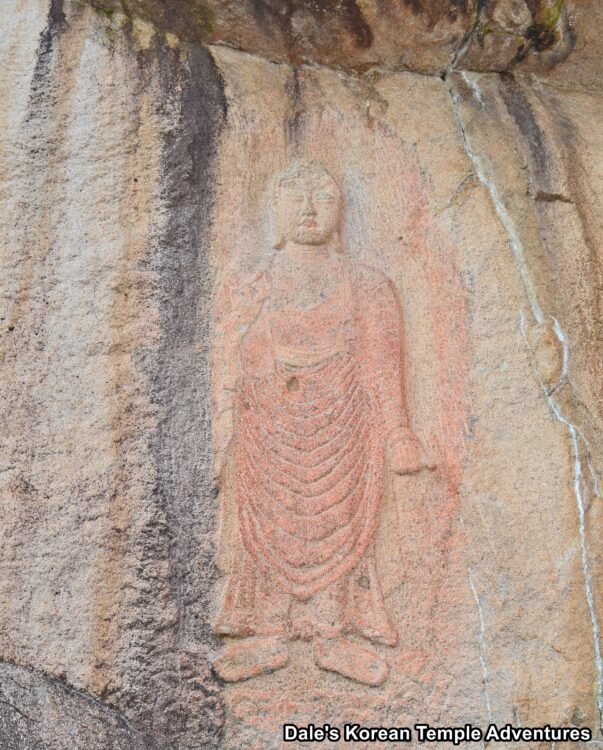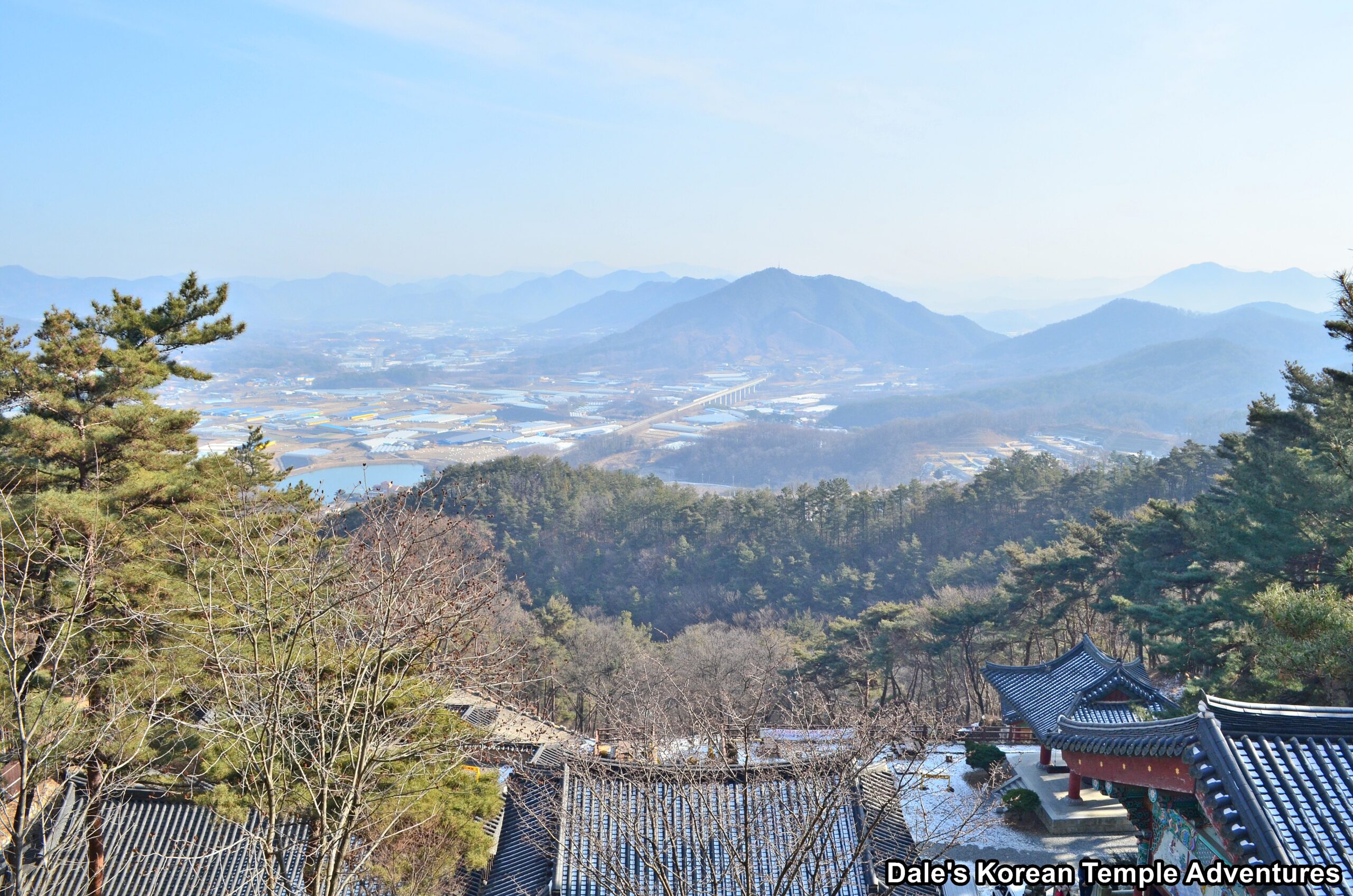Yongamsa Temple – 용암사 (Okcheon, Chungcheongbuk-do)
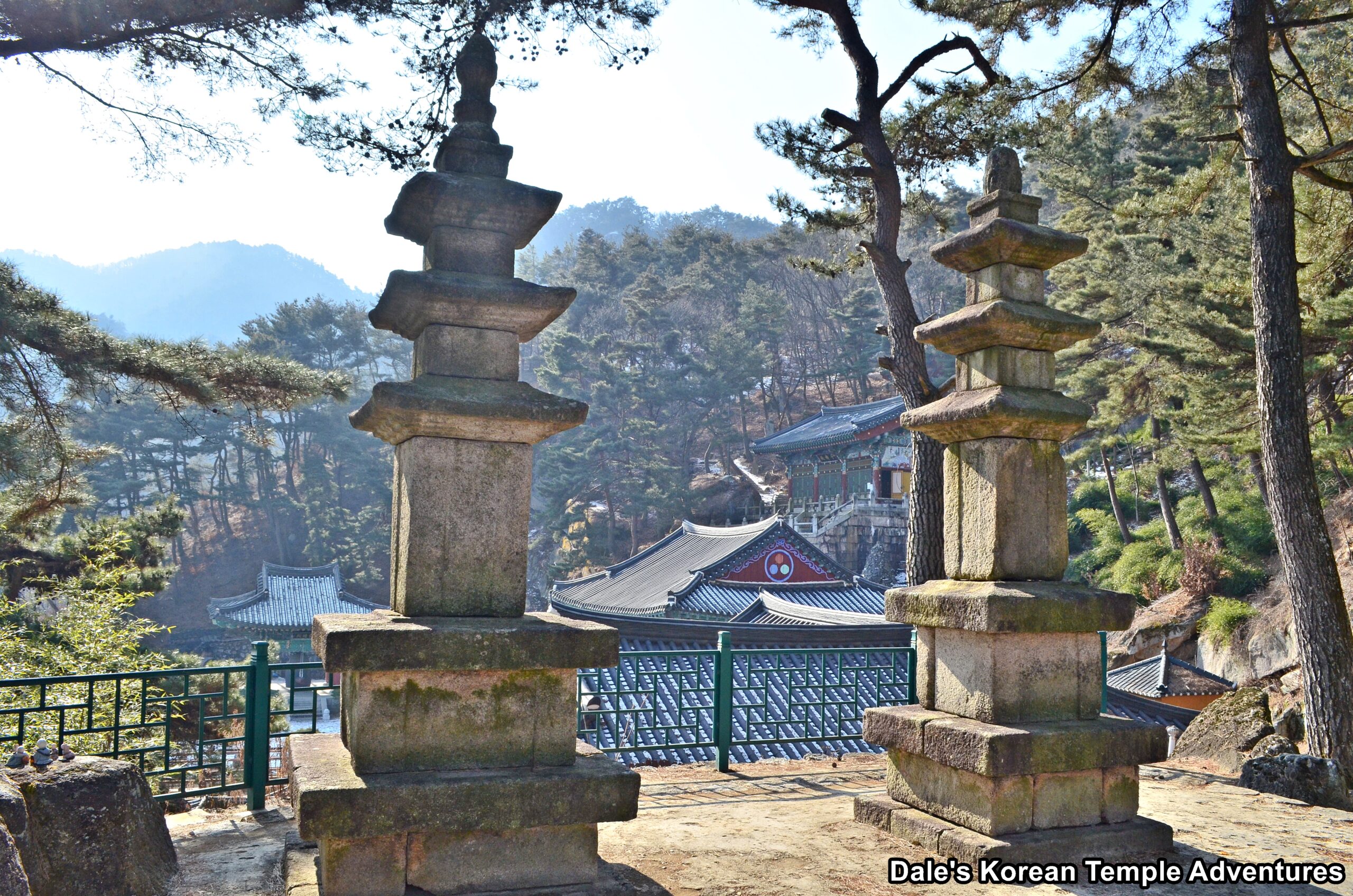
Temple History
Yongamsa Temple in Okcheon, Chungcheongbuk-do is located on the northern side of Mt. Jangryeongam (654.5 m). Yongamsa Temple was first established in 552 A.D. by the monk Uisin. This is the very same monk that would go on to establish the famed Beopjusa Temple one year later in 553 A.D. In a twist, Yongamsa Temple is now a branch temple of Beopjusa Temple. Yongamsa Temple means “Dragon Rock Temple” in English. The temple was named after a dragon-like rock that once resided on the temple grounds. However, the Yongbawi Rock was destroyed by the Japanese, and only a trace of the rock still remains to this day. In fact, the entire temple grounds were destroyed by the invading Japanese during the Imjin War in 1592.
Fortunately, and over the past couple decades, Yongamsa Temple has been rebuilt, and it’s now home to a handful of temple shrine halls and a Korean Treasure. The East and West Three-Story Stone Pagodas of Yongamsa Temple is Korean Treasure #1338.
Temple Layout
You first make your way up to Yongamsa Temple up a long and winding mountain road that snakes its way up Mt. Jangryeongam. Nearing the temple grounds, you’ll first pass by the temple parking lot your left. Continuing your climb, you’ll finally come to the stone set of stairs that will gain you entry to the lower courtyard at Yongamsa Temple.
Straight ahead of you is the temple’s Daeung-jeon Hall. The exterior walls to this hall are adorned with Shimu-do (The Ox-Herding Murals). And out in front of the Daeung-jeon Hall are two large seokdeung (stone lanterns). Stepping inside the Daeung-jeon Hall, you’ll be greeted by a beautiful golden relief on the main altar that’s centred by Seokgamoni-bul (The Historical Buddha). To the right of the main altar is a mural dedicated to Gwanseeum-bosal (The Bodhisattva of Compassion) and a Shinjung Taenghwa (Guardian Mural). To the left of the main altar, you’ll find two additional murals. The first is dedicated to Chilseong (The Seven Stars), while the other is dedicated to Dokseong (The Lonely Saint).
To the left of the Daeung-jeon Hall, and still in the lower courtyard, you’ll find the Jong-ru Pavilion. Housed all alone in the bell pavilion is a large Brahma Bell. It’s also from this vantage point that you get a beautiful view, which won’t be your last at Yongamsa Temple, of the valley and the city of Okcheon below. Behind the Jong-ru Pavilion is an outdoor Yongwang (Dragon King) shrine. The outdoor shrine contains a large mural dedicated to the Dragon King with Yongwang to the right and a pair of twisting dragons to the left in the shaman mural.
And to the right of the Daeung-jeon Hall, and up a set of uneven stone stairs, are the East and West Three-story Stone Pagodas of Yongamsa Temple, which are Korean Treasure #1338. The twin pagodas were first built during the Goryeo Dynasty (918-1392). These pagodas are rather oddly placed at the temple. Instead of being placed in front of the main hall, they are placed to the right upon a rock outcropping that overlooks the city. The reason for their location with a view in all directions is that it’s assumed that they were built in the hopes of allowing the country to prosper. The way that this would be accomplished is by having the Buddha’s power spread throughout the country, which was widespread during the Goryeo Dynasty (918-1392). Each of the twin pagodas is a three-story structure placed upon a two-tier base. One of the pagodas is 4.1 metres in height, while the other is 4.3 metres. If you look close enough at the west pagoda, you’ll notice that there was some damage done to the second and third stories of the body. However, it’s subsequently been repaired. The pagodas are simple in their design but seemingly powerful in their connection.
To the left of the Daeung-jeon Hall, and up a set of side-winding stairs, you’ll next come to the Cheonbul-jeon Hall at Yongamsa Temple. The front doors of this shrine hall are adorned with a set of fierce Gwimyeon (Monster Mask) murals. Also, the exterior walls to this temple shrine hall are filled with Palsang-do (The Eight Scenes from the Buddha’s Life Murals). Stepping inside the Cheonbul-jeon Hall, you’ll find a triad of statues on the main altar. In the centre rests an image of Birojana-bul (The Buddha of Cosmic Energy). This statue is joined on either side by Seokgamoni-bul (The Historical Buddha) and Nosana-bul (The Perfect Body Buddha). The rest of the hall is filled with a thousand golden images of the Buddha.
To the left of the Cheonbul-jeon Hall, and still heading up the steep side-winding set of stairs, you’ll next come to the Sanshin/Dokseong-gak Hall. Inside this shaman shrine hall, you’ll find a large Sanshin (Mountain Spirit) painting to your right. This mural is joined by a smaller image of Dokseong (The Lonely Saint) to the left.
To the right of the Sanshin/Dokseong-gak Hall, you’ll come to a wooden deck. From this deck, you’ll get amazing views of the valley below. It’s also from here that you’ll find the Rock-Carved Standing Buddha of Yongamsa Temple. The stone relief of the Buddha is believed to date back to either Unified Silla (668-935 A.D.) or early Goryeo (918-1392). The image of the Buddha is standing atop a lotus-shaped pedestal. Of interest, you can still see the red paint on its halo, lips, pedestal, and robe. This is rare for a relief of such age. There is also an interesting legend attached to this stone Buddha, as well. According to this legend, Prince Maui, who was the son of King Gyeongsun of Silla (r. 927-935), climbed atop a rock and let out a cry while facing the direction of the capital. It should be remembered that King Gyeongsun was the last king of Silla. Later, the descendants of the Silla royal family carved this Buddha to commemorate and honour Prince Maui. So this Buddha is also known as the Prince Maui Buddha.
How To Get There
From the Okcheon Train Station, you’ll need to walk for 4 minutes, or 240 metres, to get to the Okcheon Bus Terminal. From the bus terminal, you’ll need to take Bus #54. After 12 stops, or 14 minutes, you’ll need to get off at the “Yeongsaengwon – 영생원” stop. From this stop, you’ll need to walk 25 minutes, or 1.7 km, uphill to get to Yongamsa Temple.
Overall Rating: 7/10
Yongamsa Temple is beautifully situated along the slopes of Mt. Jangryeongam which allows for some stunning views. In addition to its natural beauty, Yongamsa Temple is home to the twin East and West Three-Story Stone Pagodas of Yongamsa Temple that are a Korean Treasure. The temple shrine halls are beautiful both inside and out; and if you’re able to climb to the back of the temple, you’ll definitely be dazzled by the beautiful Rock-Carved Standing Buddha of Yongamsa Temple.

